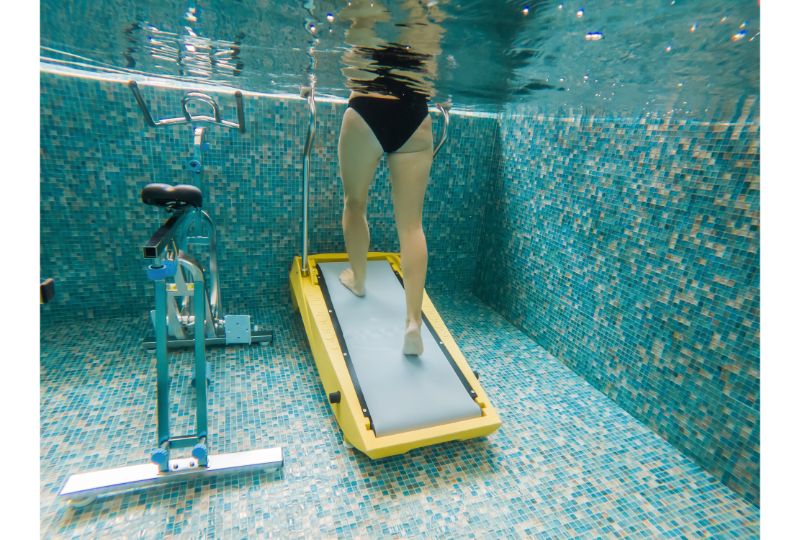What is the Difference Between Jogging and Running?
This page contains affiliate links. As an Amazon Associate I earn from qualifying purchases.
Running is running, right? Well, not quite. There’s a pretty big difference between what experts call “running” and what experts refer to as “jogging”. And the athletes who do one or the other will definitely correct you on the preferred term! Let’s take a look at the key differences between jogging and running.
Quick Navigation
Is There Really a Difference Between the Two?
If you call what a runner does “jogging”, they’re most likely going to correct you right off the bat. But is there really a difference? Some people say no, but runners and joggers alike have weighed in on the topic.
For some people, there’s little to no difference between the terms. But for others, those differences matter. Some people find the term “runner” to be far too intense, along with the idea that “runners” are people who enter races and win trophies for their accomplishments.
On the other hand, the term “jogger” may feel too casual for some people to consider what they do as “jogging”. The way jogging is often done by people who don’t have any connection with running as a sport may make some people feel as if what they do is being devalued.
So clearly, there’s already a social element of difference between jogging and running. But let’s look at the scientific differences.
What is Jogging?
Jogging is an aerobic exercise that is considered low impact and takes a lot less effort than running. Jogging is considered movement (that isn’t walking!) that is anything less than 10 minutes per mile.
Of course, the pace someone takes to finish a mile is pretty subjective. You might find that something that is theoretically considered a jog may feel more like a “run” to you, especially if you have a lot less experience with either.
What is Running?
On the other hand, running is a high-impact aerobic exercise that takes a lot more effort than jogging. Running burns a lot more calories and fat as opposed to jogging because of the high intensity and how your heart rate gets into that fat-burning stage quicker and is held there longer.
Running and jogging use the same aerobic system, but running burns up a lot more energy. The pace of running is anything that is less than 10 minutes per mile. So when you hear someone say they ran a five-minute mile, you know they were running!
Benefits of Jogging vs. Running
Jogging is great for people who are either just starting out on their fitness journey or people who are dedicated to some low-impact but still healthy exercise. Jogging overall strengthens your muscles and improves your joint health. It also improves your cardiovascular health and can even benefit those who are looking to lose weight.
Meanwhile, running can also help you lose weight, strengthen your muscles, and improve your cardiovascular health. But because it is a high-intensity exercise, running can also help you maintain your weight loss, build endurance, improve your metabolism, relieve stress, tone your core, and burn more calories.
There are great benefits to both jogging and running. Which one you decide to do depends on your own exercise journey.

Different Body Movements
The difference between the health benefits and the pace of the exercise aren’t the only differences between jogging and running. There are also differences in how you move your body, the muscle groups used, and the form you take when jogging.
Jogging
Jogging is considered more of a “bouncy” movement. Jogging, much like running, is a full-body workout. When you jog, you want to focus on not letting your arms swing as much, and your knees shouldn’t come up as high as when you’re running.
Proper jogging form is not much different than running, though much less strict in terms of aligning your knees. You don’t need to gain momentum while jogging, so your arms are free to stay comfortable at your sides without swinging them.
Running
On the flip side, running consists of longer strides. Running engages both the upper and lower half of the body, and you need to be very aware of proper form on both your upper and lower half.
Your upper body should be kept straight while running, with your gaze ahead. To achieve proper form in the lower half of your body while running, your knees should stay aligned with your toes and it’s more beneficial to land with your mid-foot rather than your heel.
How Are They Similar to Each Other?
Now that we’ve laid out all of the main differences between running and jogging, let’s take a look at where they overlap.
Jogging and running both have incredible health benefits, as we’ve discussed above. Whether you want to start jogging or dive right into learning how to be a runner, both choices will put you on a good path in terms of taking care of your body and your health. Your strong bones and cardiovascular health will thank you for it!
Both exercises are great for gaining muscle and strength. The more you do either exercise, the less difficult it will seem. Both jogging and running take some time to get used to, as well. You might find that your pace is slower than you anticipate when you first start out. But the more you do it, the more muscle and strength you’ll build, and the easier it’ll get.
There’s actually quite a bit of overlap when it comes to the gear used. Both running and jogging utilize sneakers, and there’s a wide range of “running shoes” that work just as well for jogging. Don’t let the name tag fool you! Running shoes are great for jogging, as they have good arch sport and are very breathable.
Finally, you’ll also want to be just as aware of your hydration levels while jogging as you are running— the slower pace may make it feel like you’re not exerting as much energy as you really are! Keep your water bottle with you while jogging and running.
Final Thoughts
All in all, jogging and running may look the same to an outsider, but now you know the core differences between the two exercises. While they’re both aerobic exercises, jogging is a much lower impact sport than running is, and there are different ways you want to be aware of your body when running versus jogging.
Despite their social and scientific differences, jogging and running are both incredible exercises that will benefit your health in the long run. Muscle and bone strength, cardiovascular health, and joint health are all great benefits of either sport.



